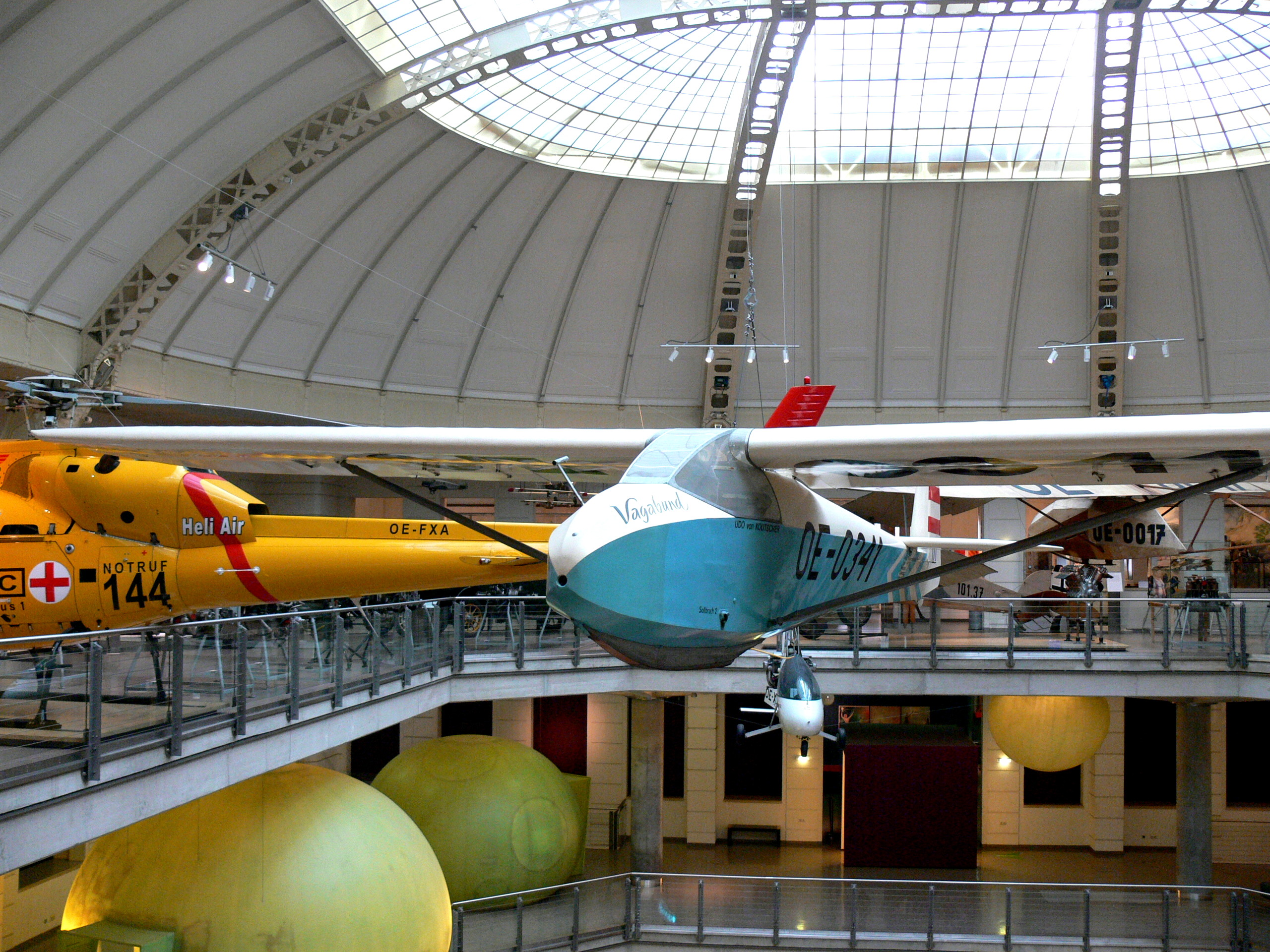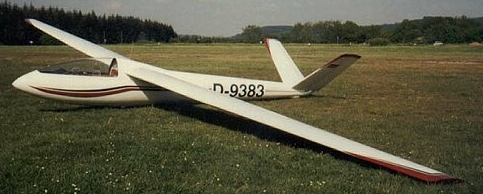|
RLM Numbering System For Gliders And Sailplanes
Contrary to the methods used by the Reich Air Ministry (RLM) for the allocation of List of RLM aircraft designations, aircraft designations, the designers and manufacturers of sailplanes and gliders in Germany enjoyed the freedom of choosing their own designations for their products up until 1945. Thus a bird name like ''Habicht'' could be used, or a number combined with two or more letters, stemming from the designer's or factory's name, such as Deutsche Forschungsanstalt für Segelflug, DFS, Rhön-Rossitten Gesellschaft, RRG or Schempp-Hirth, Göppingen. The RLM only assigned them for every design a separate number, which obviously served the same purposes as that used with aircraft, namely to provide a common basis for an exchange of drawings in the event of an intended production under license by other firms or by clubs, or even single persons and to secure the provision of spare parts. A rigid system of rules for the form and order of drawings was applied. Whereas RLM aircraft ... [...More Info...] [...Related Items...] OR: [Wikipedia] [Google] [Baidu] |
Reich Air Ministry
The Ministry of Aviation (german: Reichsluftfahrtministerium, abbreviated RLM) was a government department during the period of Nazi Germany (1933–45). It is also the original name of the Detlev-Rohwedder-Haus building on the Wilhelmstrasse in central Berlin, Germany, which today houses the German Finance Ministry (german: Bundesministerium der Finanzen). The Ministry was in charge of development and production of all aircraft developed, designed and built in Germany during the existence of the Third Reich, overseeing all matters concerning both military and civilian designs – it handled military aviation matters as its top priority, particularly for the Luftwaffe. As was characteristic of government departments in the Nazi era, the Ministry was personality-driven and formal procedures were often ignored in favour of the whims of the Minister, ''Reichsmarschall'' Hermann Göring. As a result, early successes in aircraft development progressed only slowly and erratically dur ... [...More Info...] [...Related Items...] OR: [Wikipedia] [Google] [Baidu] |
Jacobs Rhönbussard
Jacobs may refer to: Businesses and organisations *Jacob's, a brand name for several lines of biscuits and crackers in Ireland and the UK *Jacobs (coffee), a brand of coffee * Jacobs Aircraft Engine Company, former American aircraft engine company *Jacobs Engineering Group, an American international technical professional services firm *Jacobs Entertainment, an American gaming, hospitality, and entertainment company * Jacobs School of Medicine and Biomedical Sciences, at the University at Buffalo, New York, U.S. *Jacobs School of Music, at, Indiana University, U.S. *Jacobs University Bremen, in Germany Places *Jacobs, Louisville, Kentucky, U.S. *Jacobs, Pennsylvania, U.S., now Port Providence *Jacobs, Wisconsin, U.S. *Jacobs Island, Antarctica Other uses *Jacobs (surname), including a list of people with this name * Jacobs F.C., a former Irish football club *, a tug, formerly ''Empire Gnome'' See also * Jacob (other) * Jacobs Creek (other) * Jacobs River (d ... [...More Info...] [...Related Items...] OR: [Wikipedia] [Google] [Baidu] |
DFS Weihe
The DFS Weihe (English: ''Harrier'') is a German single-seat, high-wing, 18 metre wingspan, high-performance glider that was designed by Hans Jacobs in 1937-38. Design and development Jacobs designed the Weihe to be the pre-eminent performance glider of its era and indeed it captured many championships and set many records, until its performance was surpassed at the end of the 1950s. Even today it is considered one of the "classic sailplane designs". The Weihe is of wooden construction with fabric covering on the wing trailing edges and the control surfaces. The spar is built from Baltic Pine, with a birch leading edge D-box, fuselage and the fixed portions of the tail surfaces. The airfoil is a modified Gö 549-M.2 section. Early versions took off from a dolly and landed on a fixed skid, while later versions has a fixed wheel and skid undercarriage. Originally fitted with DFS-style airbrakes, some were later modified for Schempp-Hirth style brakes instead. The aircraft incor ... [...More Info...] [...Related Items...] OR: [Wikipedia] [Google] [Baidu] |
Hütter Hü 17
The Hütter Hü 17, is a German high-wing, strut-braced, single-seat, utility training glider that was designed by brothers Ulrich Hütter and Wolfgang Hütter in the 1930s.Said, Bob: ''1983 Sailplane Directory, Soaring Magazine'', page 86, Soaring Society of America November 1983. USPS 499-920 The aircraft's correct designation is unclear and various sources refer to is as the Hütter Hü 17, Hütter-17, Hütter H-17, Hutter H-17, Hütter Hü-17, Göppingen Gö 5 and Goppingen 5. Design and development The Hütter brothers designed the Hü 17 in Salzburg, Austria, the designation indicating the aircraft's glide ratio. The design was made available as plans for amateur construction and several hundred were completed. The brothers then joined the Schempp-Hirth company which constructed about five of the aircraft under the designation Göppingen Gö 5. The aircraft is of wooden construction, using a D-tube wing with a single strut and doped aircraft fabric covering. The wing em ... [...More Info...] [...Related Items...] OR: [Wikipedia] [Google] [Baidu] |
Schneider Grunau Baby III
The Schneider Grunau Baby was a single-seat sailplane first built in Germany in 1931, with some 6,000 examples constructed in some 20 countries. It was relatively easy to build from plans, it flew well, and the aircraft was strong enough to handle mild aerobatics and the occasional hard landing. When the Baby first appeared, it was accepted wisdom that the pilot should feel as much unimpeded airflow as possible, to better sense rising and falling currents of air and temperature changes etc. It was designed by Edmund Schneider with the assistance of Wolf Hirth and Hugo Kromer as a smaller version of Schneider's ESG 31 of the previous year, incorporating an elliptical wing design based on work done by Akaflieg Darmstadt. It was named after Grunau, the town where Schneider's factory was located, now Jeżów Sudecki in Poland. The first 14 inner ribs were of the Göttingen 535 shape with the outer ribs gradually changing up to the last 22nd rib, having a bi-convex and symmetric ... [...More Info...] [...Related Items...] OR: [Wikipedia] [Google] [Baidu] |
Dittmar Condor III
The Schleicher Condor, also referred to as the Dittmar Condor, is a series of German high-wing, single and two-seat, gull winged, gliders that were designed by Heini Dittmar in the 1930s, produced in small quantities before the Second World War, produced again between 1952 and 1955 by Alexander Schleicher GmbH & Co and also by Ferdinand Schmetz.Said, Bob: ''1983 Sailplane Directory, Soaring Magazine'', page 104, Soaring Society of America November 1983. USPS 499-920 Design and development The first Condor I was introduced in 1932. The aircraft was further developed into the Condor II and the IIA, which replaced strut bracing with a cantilever wing. Following the Second World War the two-seat Condor IV first flew in 1951 and was put into series production by Schleicher. The Condor series was built from wood, with the wooden-framed wing covered in doped aircraft fabric. The Condor IV has a span wing that employs a Goettingen 532 airfoil at the wing root, changing to a NAC ... [...More Info...] [...Related Items...] OR: [Wikipedia] [Google] [Baidu] |
Akaflieg München Mü 13D Merlin
Akaflieg is an abbreviation for ''Akademische Fliegergruppe'', groups of aeronautical engineering students from individual German Technical Universities, pre and postwar, who design aircraft, often gliders. History Otto Lilienthal published his book ''Der Vogelflug als Grundlage der Fliegekunst (Birdflight as the Basis of Aviation)'' in 1889. This described the basics of modern aerodynamics and aircraft construction. Lilienthal then made many successful flights starting in 1891. However attention then shifted to powered flight after World War I. Gliding re-emerged as a sport after the war because the building of powered aircraft was restricted in Germany by the Treaty of Versailles. The main originator of the gliding movement was Oskar Ursinus, who in 1920 organised the first contest, known as the Rhön-Contest, on the Wasserkuppe. Thereafter the contest was held annually. Students of technical universities brought gliders which they had developed and built themselves for te ... [...More Info...] [...Related Items...] OR: [Wikipedia] [Google] [Baidu] |
Schempp-Hirth Göppingen Gö 4
Schempp-Hirth Flugzeugbau GmbH is a glider manufacturer based in Kirchheim unter Teck, Germany. History Martin Schempp founded his own company in Göppingen in 1935, with the assistance of Wolf Hirth. The company was initially called "Sportflugzeugbau Göppingen Martin Schempp". In 1938, Wolf Hirth, mainly responsible for the design work, officially became a partner in the company, which then became "Sportflugzeugbau Schempp-Hirth". The company relocated to Kirchheim unter Teck the same year. The company's first product was the Göppingen Gö 1 ''Wolf'' glider, conceived as a rival to the ubiquitous Grunau Baby, but real success came with the Göppingen Gö 3 ''Minimoa'' the same year. During World War II, the company built DFS Habicht training gliders, as well as tailplane assemblies for the Messerschmitt Bf 109. The company also built a research aircraft, the Göppingen Gö 9 to investigate Claude Dornier's rear-mounted " pusher" propeller plans. With its cruciform tail, ... [...More Info...] [...Related Items...] OR: [Wikipedia] [Google] [Baidu] |
DFS Reiher
The DFS Reiher (in English ''Heron'') was a single seat competition glider designed in Germany by Hans Jacobs and first flown in 1937. The type won the last two German Rhön gliding championships before the start of World War II. Six were factory produced. Design and development In 1935 Hans Jacobs had been asked by Alexander Lippisch to become chief designer of sailplanes at the nationalised Deutsche Forschungsanstalt für Segelflug (DFS) at Darmstadt, after the closure of the RRG (Rhön-Rossitten Gesellschaft) on the Wasserkuppe in 1933. In 1936 there was more recognition of the need for fast gliders with high wing loading and low camber to fare better in competitions by moving quickly between strong thermals; the hope was that camber-changing flaps would enhance lift in the climb. The Reiher was Jacobs' attempt to build these qualities into a new sailplane, using all the DFS design and prototype production facilities and skills. It was an all-wood aircraft with a mid-mou ... [...More Info...] [...Related Items...] OR: [Wikipedia] [Google] [Baidu] |
Göppingen Gö 3 Minimoa
Göppingen ( Swabian: ''Geppenge'' or ''Gebbenga'') is a town in southern Germany, part of the Stuttgart Region of Baden-Württemberg. It is the capital of the district Göppingen. Göppingen is home to the toy company Märklin, and it is the birthplace of football player Jürgen Klinsmann. It also hosts the headquarters of TeamViewer AG - the main sponsors of Manchester United. Geography Göppingen is situated at the bottom of the Hohenstaufen mountain, in the valley of the river Fils. The districts of Göppingen are Bartenbach, Bezgenriet, Faurndau, Göppingen, Hohenstaufen, Holzheim, Jebenhausen and Maitis. History Tradition holds that the city was founded by an Alemannic leader called Geppo sometime in the 3rd or 4th century. A disastrous fire on August 25, 1782 destroyed most of the town, but it was immediately rebuilt. Industrialisation during the 19th century made the area into a centre of industry. The importance of such industry is still seen in the town in the p ... [...More Info...] [...Related Items...] OR: [Wikipedia] [Google] [Baidu] |


